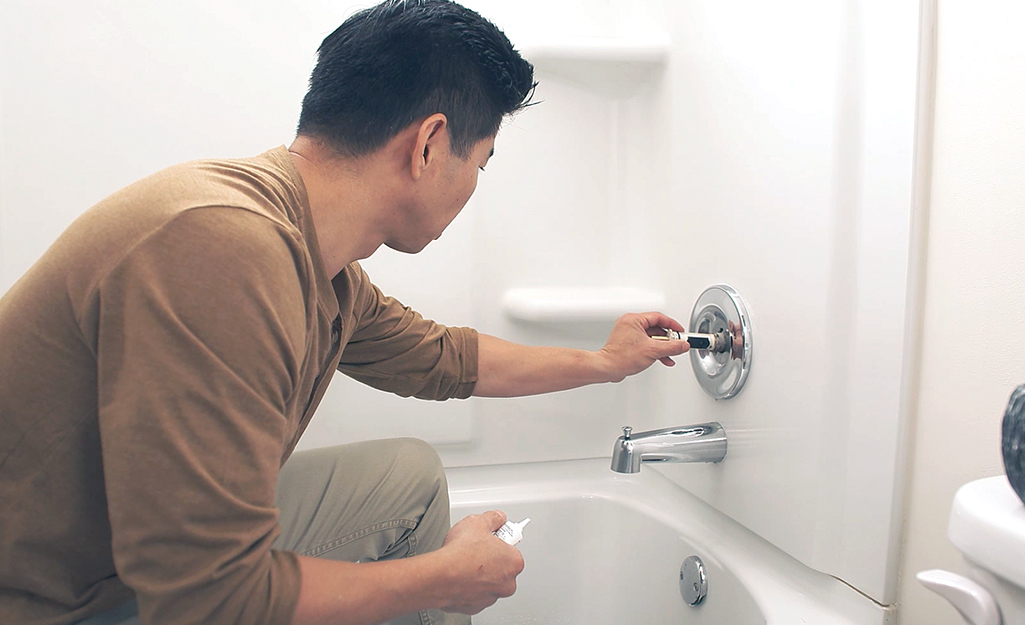Discovering the Significance of Repairing a Dripping Faucet
Discovering the Significance of Repairing a Dripping Faucet
Blog Article
This article down below on the subject of Should I Repair or Replace a Leaky Faucet? is unquestionably fascinating. Give it a try and make your own personal findings.

Dripping faucets might feel like a small inconvenience, but their impact goes beyond just the annoyance of the noise. From drainage to incurring unnecessary economic prices and health dangers, ignoring a dripping faucet can cause numerous effects. In this article, we'll delve into why it's critical to address this typical house concern promptly and efficiently.
Waste of Water
Ecological Impact
Leaking taps add substantially to water wastefulness. According to the Epa (EPA), a single faucet dripping at one drip per secondly can throw away more than 3,000 gallons of water per year. This not just pressures water sources but additionally influences environments and wildlife based on them.
Financial Expenses
Boosted Water Costs
Past the ecological impact, dripping faucets can inflate water bills substantially. The built up wastefulness with time converts right into greater utility expenses, which could have been stayed clear of with prompt fixings.
Prospective Property Damages
Moreover, long term leaking can result in damage to fixtures and surfaces bordering the tap. Water build-up can cause discoloration, deterioration, and also structural issues if left neglected, causing extra repair prices.
Wellness Issues
Mold and Mold Growth
The consistent presence of dampness from a dripping tap develops an ideal setting for mold and mildew and mold growth. These fungi not only endanger interior air high quality however also position health threats, especially for people with respiratory conditions or allergic reactions.
Waterborne Diseases
Stagnant water in trickling taps can become a breeding place for germs and various other microorganisms, boosting the threat of waterborne conditions. Pollutants such as Legionella microorganisms grow in stationary water, potentially resulting in severe diseases when ingested or inhaled.
Do it yourself vs. Expert Repair service
Advantages and disadvantages of DIY Repair
While some might attempt to deal with a leaking tap themselves, do it yourself repair work feature their own collection of challenges. Without appropriate expertise and tools, do it yourself efforts can intensify the problem or bring about incomplete repairs, extending the issue.
Advantages of Hiring an Expert Plumber
Employing a specialist plumber makes certain that the underlying cause of the leaking faucet is attended to effectively. Plumbing technicians possess the experience and tools to detect and fix tap problems effectively, saving time and reducing the risk of further damages.
Step-by-Step Overview to Dealing With a Dripping Tap
Tools Required
Prior to trying to repair a dripping tap, gather the necessary devices, consisting of an adjustable wrench, screwdrivers, substitute parts (such as washers or cartridges), and plumber's tape.
Typical Faucet Issues and Their Solutions
Identify the type of tap and the details concern triggering the drip. Usual issues consist of worn-out washing machines, rusty valve seats, or defective O-rings. Describe manufacturer directions or on the internet tutorials for detailed guidance on repair work.
Safety nets
Normal Upkeep Tips
To prevent dripping faucets, carry out regular maintenance such as cleaning up aerators, examining for leakages, and changing damaged components immediately. In addition, take into consideration mounting water-saving tools or updating to a lot more effective fixtures.
Significance of Prompt Fixes
Resolving leaking faucets as soon as they're discovered avoids further water wastage and potential damage, eventually saving both water and money in the future.
Impact on Residential Or Commercial Property Worth
Assumption of Well-Maintained Residential Or Commercial Property
Maintaining a residential property in good condition, consisting of attending to maintenance issues like trickling faucets, boosts its perceived worth and worth among possible buyers or tenants.
Impact on Resale Value
Residences with well-maintained plumbing components, including taps, command higher resale worths in the realty market. Addressing trickling faucets can contribute to a favorable impression throughout home inspections and settlements.
Ecological Responsibility
Private Payment to Conservation
Taking obligation for taking care of trickling faucets straightens with broader efforts toward water conservation and ecological sustainability. Every person's activities jointly make a significant impact on protecting valuable resources.
Sustainable Living Practices
By focusing on prompt repairs and adopting water-saving behaviors, people contribute to lasting living methods that benefit both existing and future generations.
Final thought
Addressing a leaking faucet surpasses mere ease; it's a necessary step towards saving water, lowering monetary prices, and protecting wellness and home. Whether via DIY repair services or specialist support, doing something about it to fix dripping taps is a tiny yet impactful method to advertise liable stewardship of sources and contribute to a healthier, a lot more lasting future.
How to Fix a Leaky Faucet: Step-by-Step Repair Guide
A leaky faucet may seem like a simple annoyance, but if it's not fixed promptly, that leak could cost hundreds to potentially thousands. From water damage to mold, mildew, and high water bills, even a tiny leak can be catastrophic if left unattended. Damage like this can even affect the overall value of your home, so it's important to take the right approach for leaky faucet repair. You may need the help of a plumber in some cases, but we've got a few tips you can try on how to fix a leaky faucet before calling the pros.
Four Faucet Types
When you're learning how to fix a leaky faucet, the first step is knowing what kind of faucet you're working with! There are four common types.
Cartridge Faucets
Cartridge faucets come in one- or two-handled varieties. In one-handled cartridge faucets, hot and cold water combines in a single cartridge. In the two-handled versions, hot and cold water are controlled separately and mixed in the faucet.
Ball Faucets
Ball faucets have a single lever you push up and down to adjust the pressure and rotate to change the temperature. A slotted metal ball controls the amount of water allowed into the spout.
Compression Washer Faucets
They're the oldest type of faucet, but they're still used in many homes — especially older ones. Compression faucets have two separate handles that, when turned, raise or lower the washer that seals a water valve. This valve stops water from flowing through the faucet when it is turned off.
Disc Faucets
Disc faucets rarely need to be repaired due to their maintenance-free design. The water flow is controlled by two discs — the upper one raises and lowers against a fixed lower disc, creating a watertight seal. If your disc faucet starts leaking, you may need to replace the seals or clean residue buildup from the inlets.
Fixing a Leaky Faucet
Step 1: Turn Off the Water
Whether you're learning how to fix a leaky bathtub faucet or how to fix a leaky kitchen faucet, always turn off the water supply to your working area when you're fixing a leak. The last thing you want is a flood added to your list of things to fix.
Look for the shutoff valves below your sink or around the tub and turn them clockwise to stop the water flow. If your faucet doesn't have shutoff valves, you may need to turn off the water for the whole house. Check to make sure it's off by turning the faucet on. If nothing comes out, you're ready to start the repair.
Step 2: Take Apart the Faucet
How you disassemble your faucet depends on the type of fixture you have. You can use a flathead screwdriver to remove the caps on top of the handle or handles for cartridge and compression faucets. Inside, you should see handle screws. Unscrew these with a screwdriver to remove the handle.
Disc- and ball-style faucets will typically have an inlet screw near the handle, and removing that will reveal the interior of the faucet.
Detach the Valve Stem
For cartridge- and compression-style faucets, you'll see the inner valve stem or cartridge once you remove the faucet handles. If you have a compression faucet, unscrew the brass valve stem. If you have a cartridge faucet, pull out the cartridge. If your cartridge has been in place for a while, it may require some tools or extra force to remove it due to mineral deposits.
Examine and Replace Parts
Once you've removed the parts, check them out to confirm what needs to be replaced. You may see corroded rubber washers, O-rings, stems, or cartridges. On a ball-style faucet, check the seats and springs for damage.
If you need to repair a leaky disc faucet, check the inlet and seals on the lower disc.
Once you determine what parts must be replaced, visit your local hardware store. Bring the damaged parts with you to ensure you can purchase the correct components to replace them.
Clean Valves and Faucet Cavity
If you've removed a stem or cartridge, you may notice mineral buildup in the faucet's threads. Use white vinegar to clean the valve seat by soaking it for a few minutes, then scrub it away with a soft toothbrush and rinse with warm water. You can also clean the interior of the faucet in the same way.
Reassemble the Faucet
Once your faucet is cleaned and the required parts have been replaced, it's time to reassemble it. Put the pieces back together and slowly turn the water supply back on. Doing this slowly is crucial because too much initial water pressure can damage the new hardware you've just installed.
https://homewarranty.firstam.com/blog/how-to-fix-leaky-faucet

We were made aware of that article about from a buddy on a different web blog. Please take the opportunity to promote this blog if you enjoyed it. Thanks a bunch for being here. Don't hesitate to come by our site back soon.
Report this page